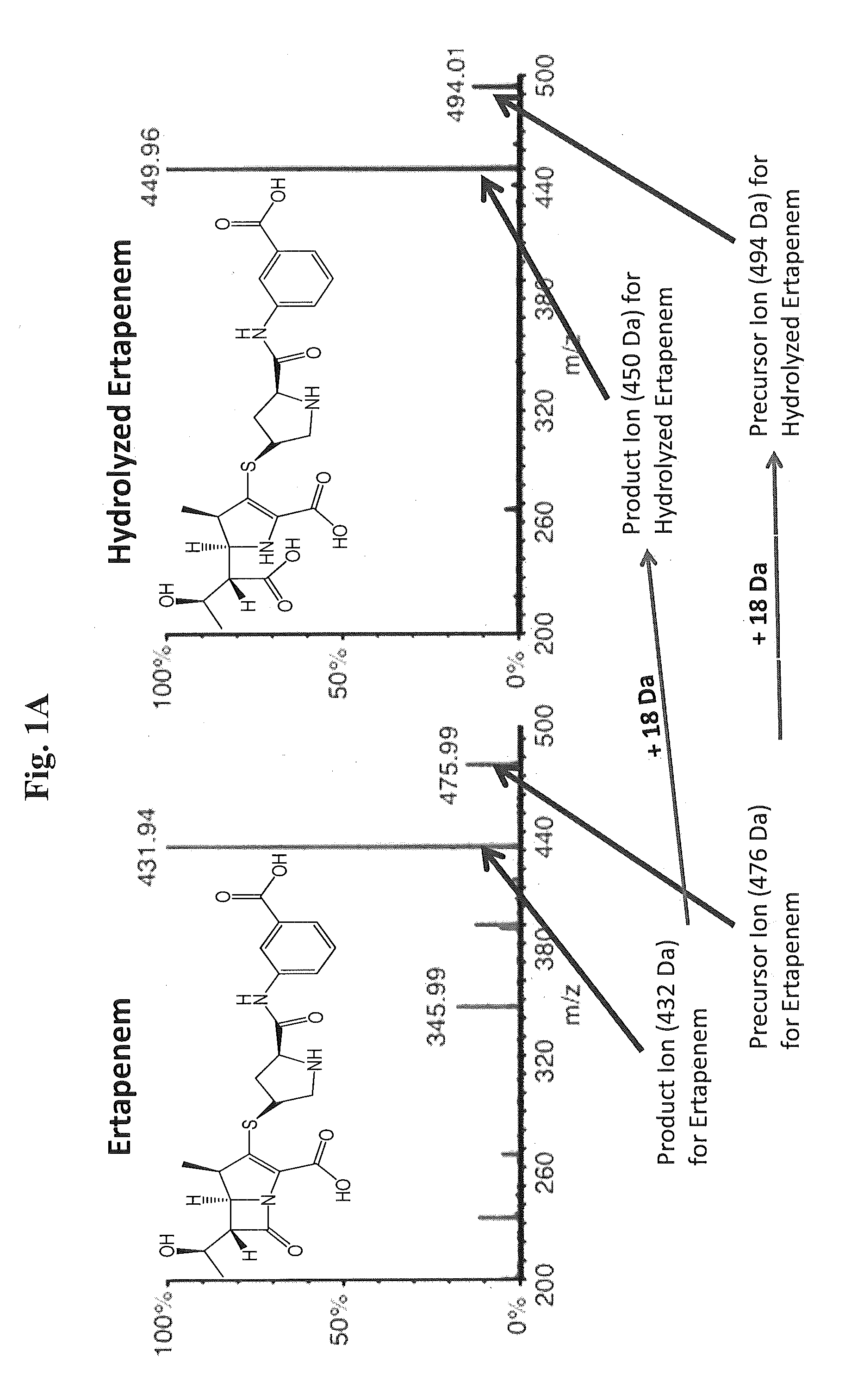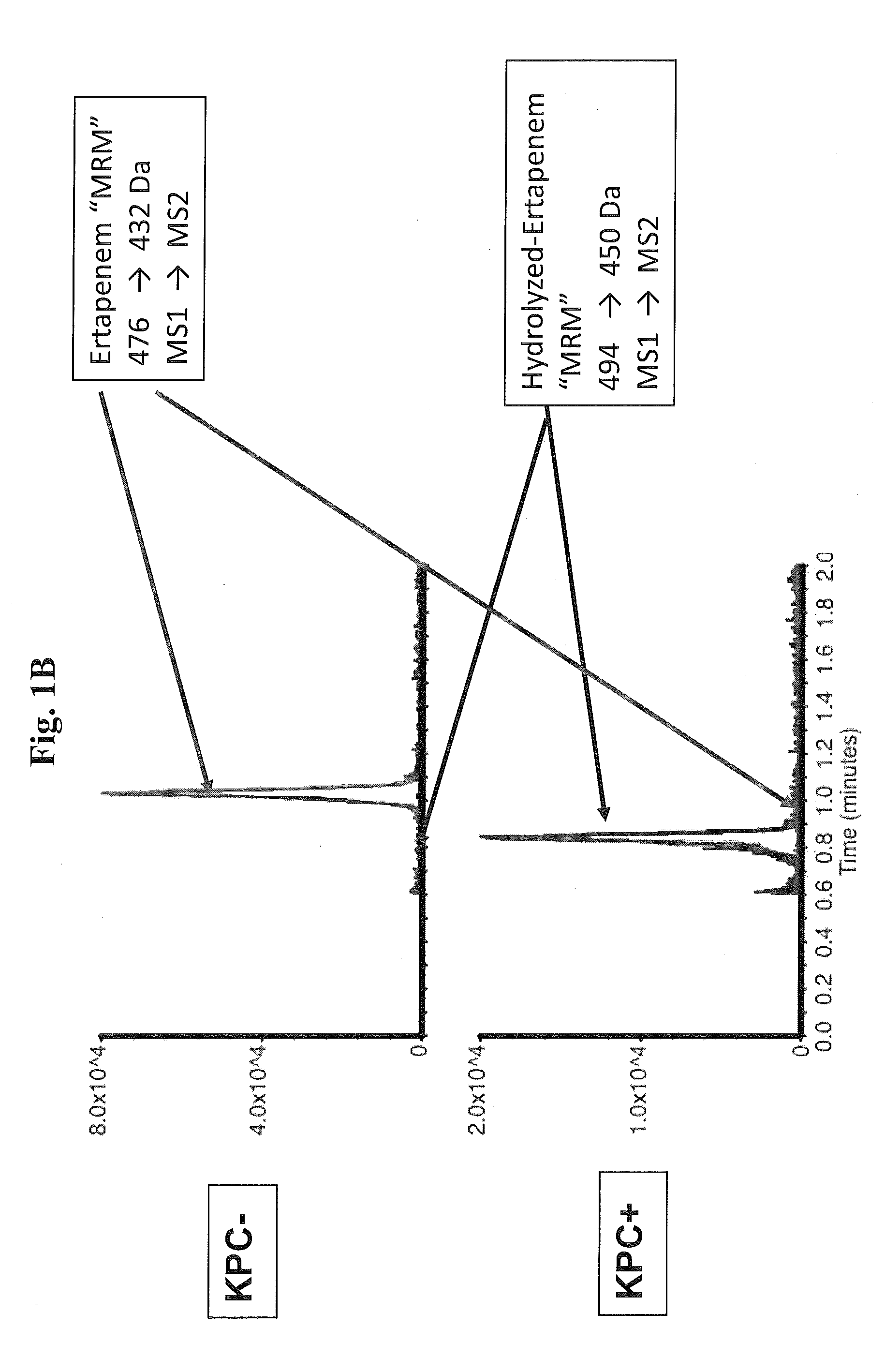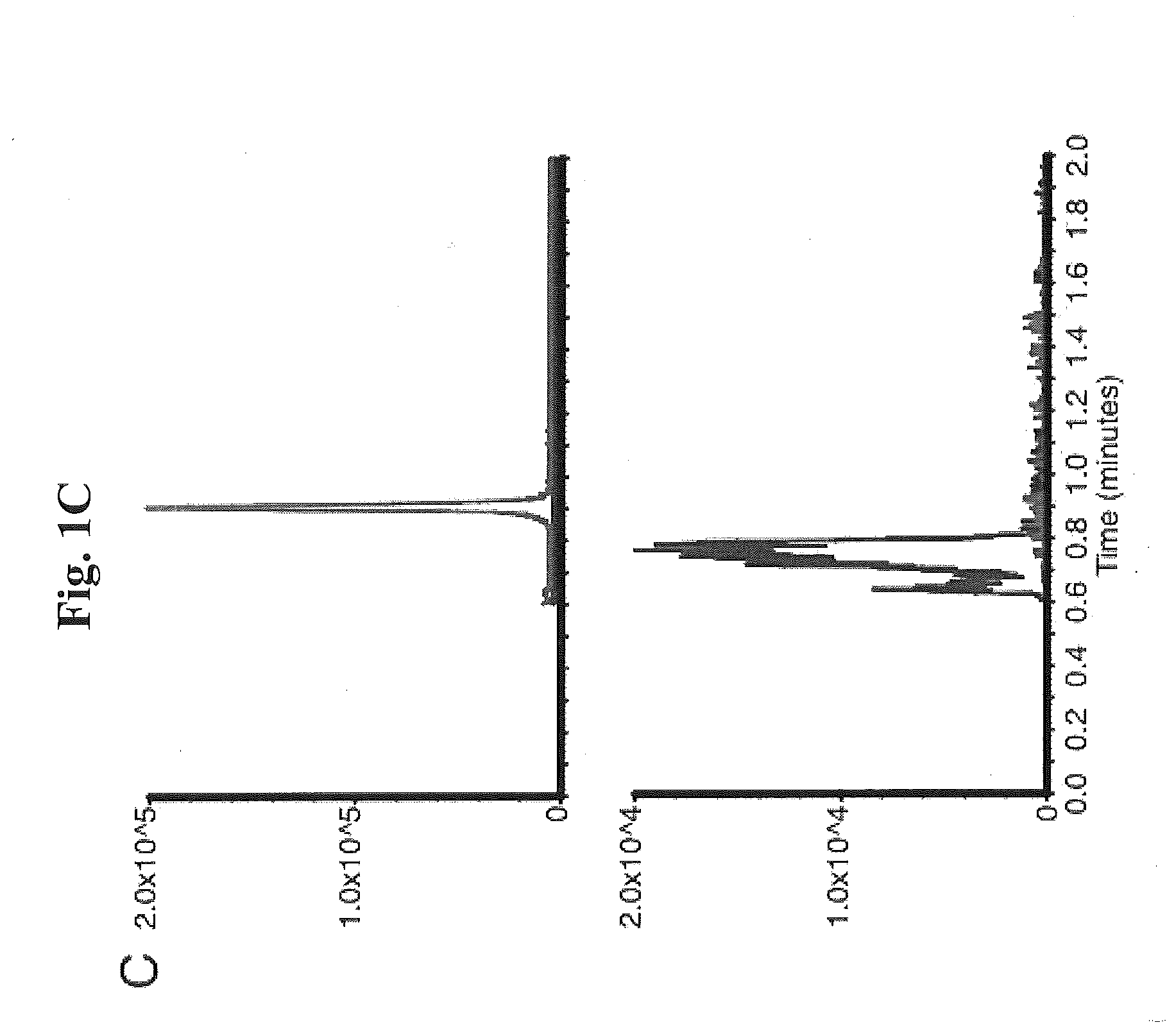Methods and Kits for Detection of Antibiotic Resistance
a technology for antibiotic resistance and kits, applied in biochemistry equipment and processes, instruments, material analysis, etc., can solve the problems of multi-drug resistant gram-negative bacteria, increasing morbidity and mortality, and prolonging hospital stays, so as to promote bacterial resistance to the antibiotic compound
- Summary
- Abstract
- Description
- Claims
- Application Information
AI Technical Summary
Benefits of technology
Problems solved by technology
Method used
Image
Examples
example 1
Mass Spectrometry Detects the Hydrolysis of Ertapenem in Clinical Samples
[0091]Proof of principle experiments were performed using a well characterized KPC-positive, K. pneumoniae strain to demonstrate that the assay of the present invention is rapid and reproducible.
[0092]In one embodiment, the following protocol was used. MS / MS parameters were adjusted using ertapenem reconstituted in H2O. The KPC-producing and KPC-negative K. pneumoniae strains ATCC 1705 and ATCC 1706, respectively, were used as described herein. For detection of ertapenem in biological samples, bacteria were inoculated into tryptic soy broth (TSB) in the presence of ertapenem (2.5 mcg / mL) and incubated for the indicated period of time. Bacteria were removed by centrifugation at 13,000 rpm for 5 minutes, 500 μL of supernatant was decanted to new tubes, and an equal volume of 100% acetonitrile was added to precipitate proteins. After vortexing, samples were centrifuged at 13,000 rpm for 5 minutes, and supernatants...
example 2
Optimization for Clinical Detection of Bacterial Carbapenemase Activity by HPLC-MS / MS
[0095]Bacterial supernatants may contain non-precipitated polysaccharide capsule material and salts. Thus, a retention time for ertapenem and its hydrolyzed form of approximately 3 minutes is likely. This may allow for a solvent delay in order to prevent application of contaminating compounds on the MS instrument. The column can be washed for several minutes to maximize assay reproducibility. Experiments using a precolumn can be performed to assess its impact on the performance of the assay. Criteria that assess HPLC performance may include sensitivity, reproducibility, and peak resolution, for example. A total run time of under 8 minutes should be the goal in order to minimize TAT.
[0096]Further, changes in the HPLC conditions can affect the concentration and flow rate of the mobile phase entering the MS instrument. Thus, the MS method may be retuned using a mixture of ertapenem and its hydrolyzed f...
example 3
[0103]Determination of the Sensitivity, Specificity, and Speed of Mass Spectrometry to Detect Carbapenemase Activity Compared with Standard Laboratory Methods.
[0104]As illustrated in FIG. 2, mass spectrometry can be used as a diagnostic assay for carbapenem resistance, where the sensitivity and specificity of mass spectrometry can be analyzed. The clinical microbiology laboratory at Yale New Haven Hospital identifies approximately 10,000 Gram-negative organisms from blood, urine, wounds, respiratory specimens, and priority cultures such as spinal fluid per month (Table 1). Approximately 4% are resistant to carbapenems and 10 percent are resistant to 3rd generation cephalosporins, such as ceftazidime. The most common carbapenem resistant organisms, as determined by automated microbroth dilution on the Vitek2 system, are the Klebsiella species and P. aeruginosa. Once a Gram-negative organism is isolated from pure culture, it is placed on the Vitek2 instrument for identification and su...
PUM
| Property | Measurement | Unit |
|---|---|---|
| time | aaaaa | aaaaa |
| molecular weight | aaaaa | aaaaa |
| concentrations | aaaaa | aaaaa |
Abstract
Description
Claims
Application Information
 Login to View More
Login to View More - R&D
- Intellectual Property
- Life Sciences
- Materials
- Tech Scout
- Unparalleled Data Quality
- Higher Quality Content
- 60% Fewer Hallucinations
Browse by: Latest US Patents, China's latest patents, Technical Efficacy Thesaurus, Application Domain, Technology Topic, Popular Technical Reports.
© 2025 PatSnap. All rights reserved.Legal|Privacy policy|Modern Slavery Act Transparency Statement|Sitemap|About US| Contact US: help@patsnap.com



